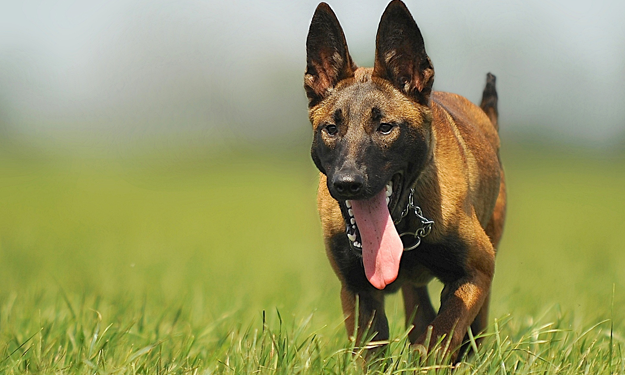Belgian Malinois Behavior & Care – Breed of the Month

This month, we’d like to highlight a breed known for their confidence and intelligence, the Belgian Malinois! Pictured here is a blood donor from Wheat Ridge Animal Hospital named Zena. These dogs are classified in the herding group of the American Kennel Club. The Belgian Malinois will form a strong tie to their owner and their family, constantly working to please their people. Their history goes back as far as 1911 when they were first introduced to the United States of America.
According to the American Kennel Club, “The Belgian Malinois (MAL-in-wah), first bred around the city of Malines in the northwestern region of Belgium, are one of four closely related breeds of Belgian herding dogs. In some countries, the Malinois is classified together with the Tervuren, Laekenois, and Belgian Shepherd (aka Groenendael) as a single breed collectively known as the Belgian Sheepdog. In America, the Malinois has been registered as a separate breed since 1959. He bears a passing resemblance to the German Shepherd Dog but has a different head, and is leggier and finer boned, than his better-known German counterpart. It was in 1911 that Mals were first brought to America. They flourished here until the outbreak of World War II put an end to the importation of European breeding stock. The breed languished in the postwar years until the early 1960s, when the Mal’s admirers began the process of replenishing its American population.” To this day, the Malinois is still known to be used for herding on farmland, however, since they are highly intelligent and motivated this has allowed the breed to be used for other occupations such as police and military K-9s.
It is normal for the Malinois to stand anywhere between 22-26 inches and weigh 40-80 pounds with a life expectancy of 14-16 years. As with any breed, it is important to familiarize yourself with common recommendations before bringing one into your family.
Beginning with a proper food diet, it is recommended to discuss with your veterinarian the absolute best food your Malinois should be on. Treats are a great tool for training but should be limited to avoid weight gain.
Fortunately, the Belgian Malinois has a somewhat easy coat to care for. Daily brushing is not necessary but rather occasionally which will help encourage new hair growth and allocate skin oils throughout the rest of the coat. These breeds also shed their coat twice a year, so be prepared for a blow out of fur! As always, be sure to keep their nails trimmed on a regular basis. It is beneficial to start training your dog at an early age on how to handle nail trims with a dremel or trimmers.
The Malinois has a HIGH activity drive so it is dire for them to receive plenty of exercise to meet their needs. This can include hiking, agility, herding, obedience, running, biking, and protection competitions. It is not recommended to leave them outside to get their exercise as they can get easily bored and may escape.
These dogs are overall a healthy breed however it is recommended by the National Breed Club to have the following health tests performed when adopting:
Hip Evaluation, Elbow Evaluation, Ophthalmologist Evaluation
The Belgian Malinois is a spectacular breed of dog with the will to please their owners. If you’d like to learn more about them, head on over to https://www.akc.org/dog-breeds/belgian-malinois/ or http://www.malinoisclub.com/abmc/.